Do you remember those days when family members argue about what to watch next? Now, those days belong to the past. With online movie streaming services, you can watch anything, anytime, from any device. Moreover, the global video streaming market is estimated to be worth over $125 billion by 2025. And if you want to join the party, this is the right time.
Below, you will find Netflix’s success story and tips on how to start a streaming service.
Let’s begin.

[Source: finance.yahoo]
The story behind Netflix success
Netflix is the leader in the video streaming industry. Starting as a DVD-by-mail company in 1997, now Netflix has over 118 million paid subscribers. In the U.S. alone, over 50% of households use this service. But why is Netflix so popular?
In 1998, Netflix launched a web-page. Besides, the platform changed from a ‘Pay per rental’ to
How to make a live stream website like Twitch
Today, the company is famous for its original shows, television classics, and movies. According to Statista, In the third quarter of 2022, the streaming company Netflix based in Los Gatos, California, reported net earnings of around 1.4 billion U.S. dollars, whilst this amount was of roughly 1.45 billion in the corresponding quarter of 2021.
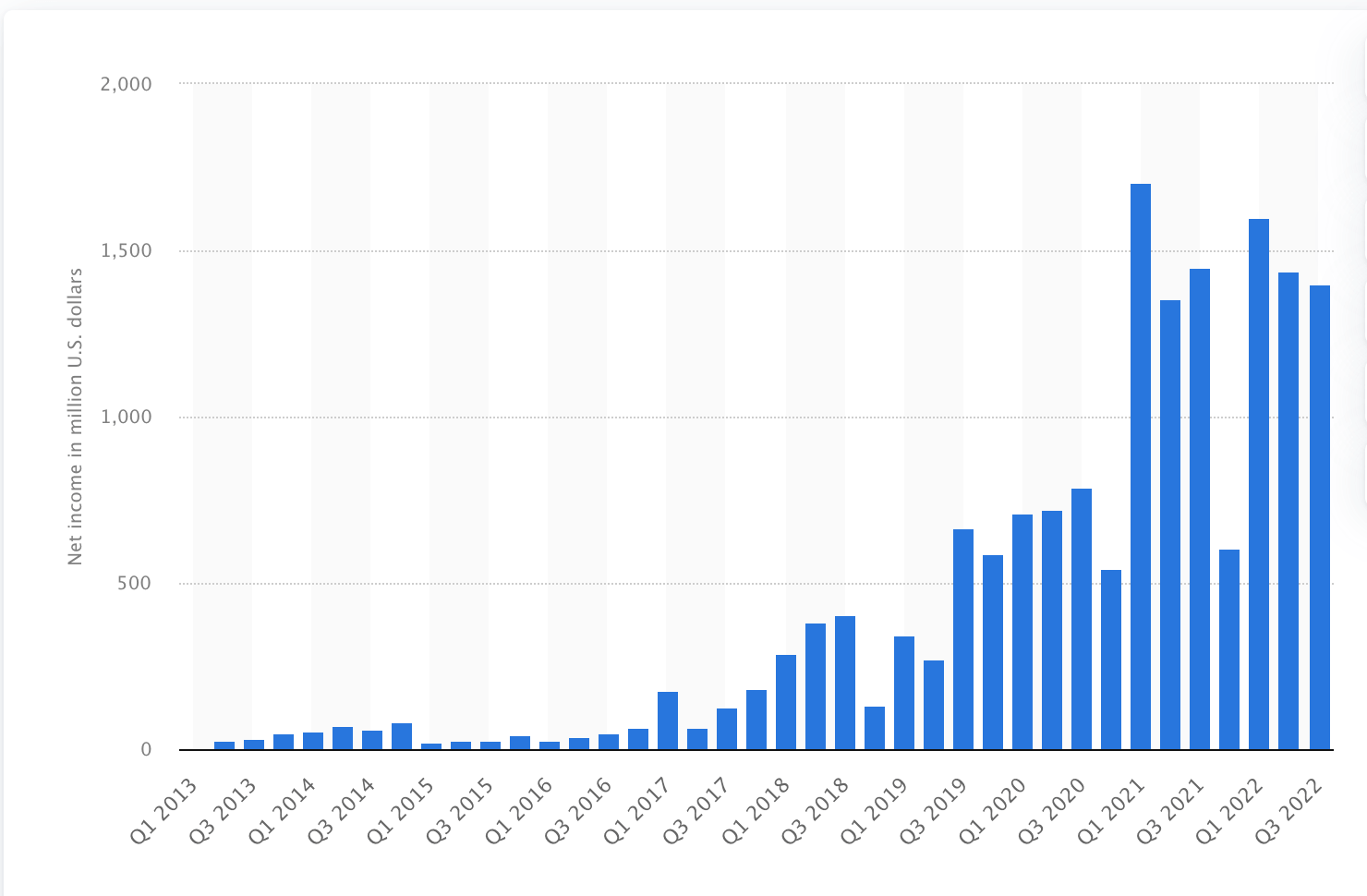
Before answering the question of how to start a streaming service, let us take a closer look at Netflix.
How to Build a Dating App like Tinder
Netflix business model
The business model is not only about the way you monetize your business. It is also about how you embrace your audience. Besides, the business model creates an organization ecosystem, able to scale upwards in the future.
Netflix uses a subscription-based business model. In combination with global expansion, this business model allows the company to scale up quickly and steadily.
Netflix Value Proposition
The Netflix value proposition includes four essential elements, such as:
Accessibility. The company delivers video across different platforms, operating systems, and devices. By using this approach, Netflix maximizes its fan base. Subscribers watch their favorite video content via browsers, tablets, and other devices.
Original content. Netflix broadcast exclusive programs and third-party publisher’s shows. Besides, the service offers some in-house shows which are not available on other platforms.
No ads. Netflix shows ads only to free account users. But, we all know how irritating ads are when you are watching your favorite series. At the same time, premium subscription owners enjoy online streaming without ads. In this way, the service motivates users to buy a subscription.
Recommendation algorithm. Netflix has thousands of T.V. shows available for streaming. The recommendation algorithm gathers relevant content and increases engagement with the platform.
HOW TO CREATE VIDEO SOCIAL MEDIA APP LIKE TIKTOK
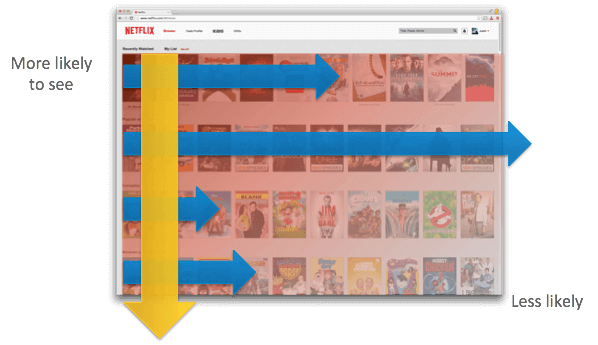
[Netflix recommendation Systems. Source: Uxplanet]
The recommendation algorithm analyzes user data from different sources. The Netflix machine learns recommendations for ranking, searching similarity, ratings, and more. Netflix also works with groups of various tastes. Thus, each subscriber fits into many groups that also affect recommendations.
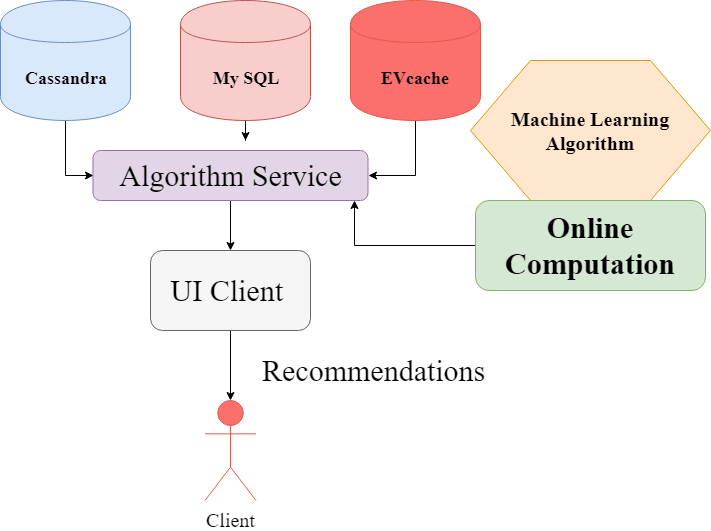
HOW TO CREATE A MUSIC APP LIKE SPOTIFY
How does Netflix make money?
The essential Netflix revenue source is subscriptions. Users can choose from the following three subscription monthly plans (for the USA):
- Basic at $9.99 per month. With this plan, users can watch movies and T.V. shows on laptops, T.V., phones, and tablets. This plan does not include high-definition viewing, and users can only watch HD videos on one screen at a time.
Standard at a cost of $157.49 per month. At this price, users can watch Full HD videos on two simultaneous viewings.- Premium costs $19.99 per month. After paying the subscription fee, users can watch 4K videos on four screens at the same time.
There is also a new Basic with ads* plan available (from November 2022). Its price is $6.99/month.
As for the target audience, Netflix has three main business segments:
- Domestic streaming. The platform revenues come from monthly fees, paid by U.S. subscribers.
- International streaming. Monthly membership fees
came from subscribers outside the United States. - Domestic DVD. Revenue generated by US subscribers who pay DVD-by-mail monthly subscription fees.
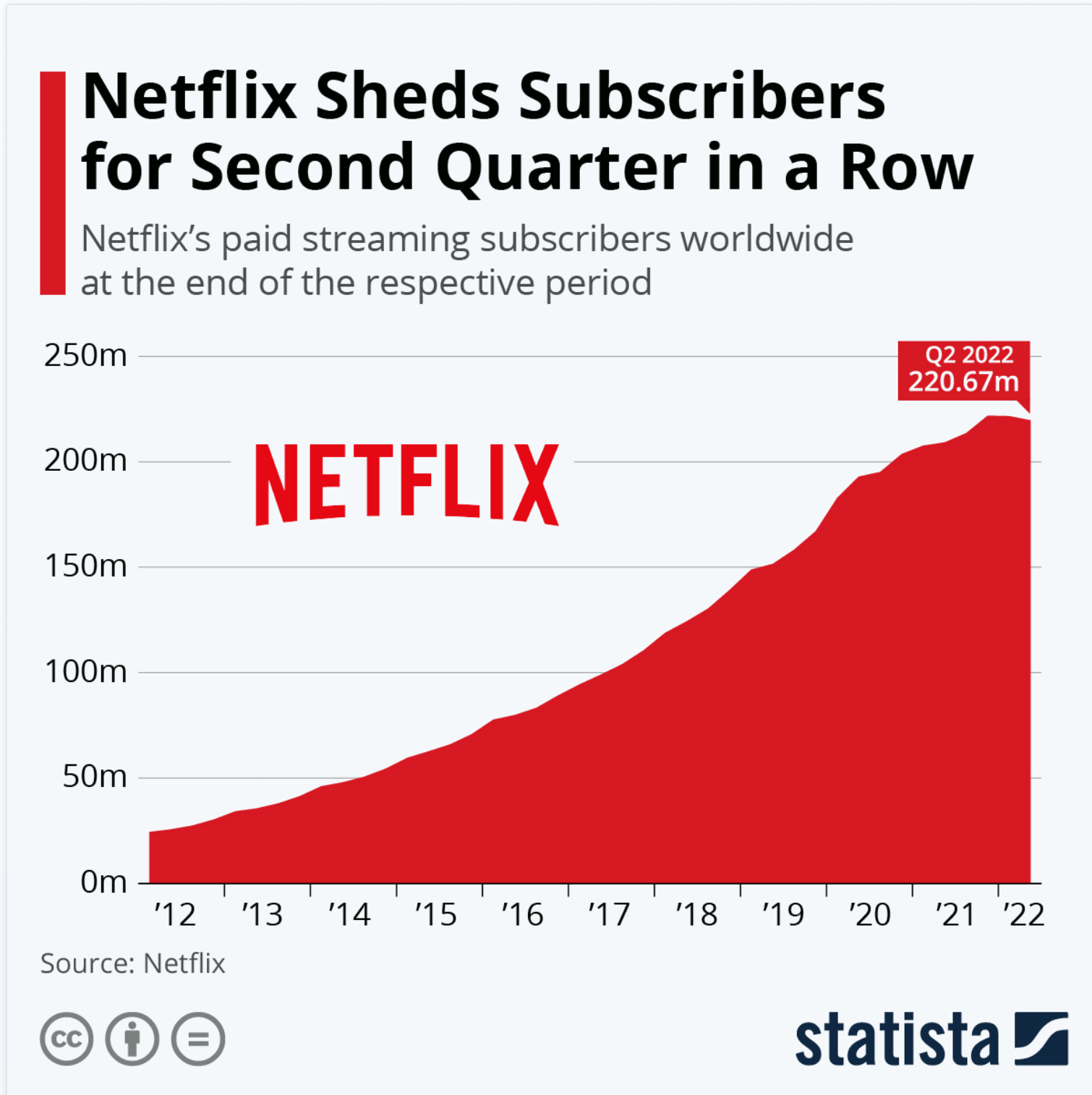
Now, let us look at the steps on how to start a business like Netflix and estimate the app development cost.
What solutions can we offer?
Find Out MoreOur Success Story
CASE STUDY: VIDEO STREAMING APP PROOF OF CONCEPT
At The APP Solutions, we often receive requests from potential clients for video streaming app development. Clients, who consider The APP Solutions as a tech partner, are looking for evidence that we have expertise in video streaming and social media app development.
We decided to build a proof of concept of a video streaming application to ensure the ownership of the tech expertise. We also gave a detailed description of the overall architecture, feature list, and technologies we applied.
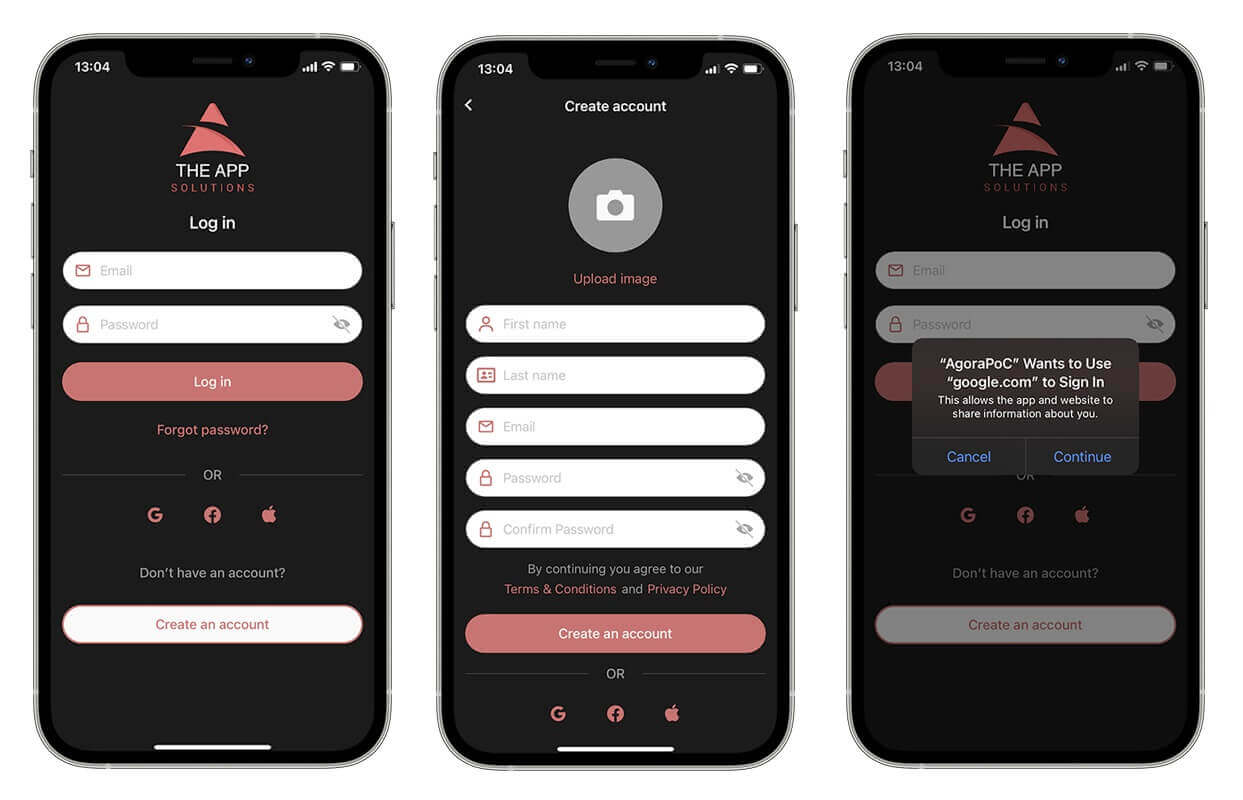
In addition, social media applications, doctor-on-demand projects, and virtual events software also apply video streaming functionality.
How to Create Your Own Streaming Service App
The development of a Netflix style business is not as hard as it seems. To achieve this, you need to go through several steps as described below.
Step 1. Find your niche
The first thing to do is to decide what content your app will stream to users. To give you a clue on profitable steaming niches, we have gathered several ideas below.
- Entertainment. Netflix and HBO show us that entertainment streaming services are very profitable. The audience is big enough to accommodate a new streaming provider.
- Fitness. Fitness is another prospective niche for VOD services. People would love to pay for a subscription to have access to fitness-related videos anytime. Besides, you can add different video categories, like yoga, dance training, or a healthy diet to enhance a wider audience.
- Education. Nowadays, people are more likely to watch “How to” videos, rather than reading tutorials and instructions. Moreover, you can choose from many sub-niches, like magic tricks, cake making, or even origami to attract a specific audience.
Step 2. Decide on the content availability
Since the content is the basis of your on-demand streaming service, you need to determine what your content will be.
- Would you use videos from other distributors?
- Or, would you want to create your video content?
If you want to cooperate with video distributors, you need to get a license for public performance. There are two ways to deal with that:
- Renting a movie from the authorized distributor with licenses
- Contacting the copyright holder
Both options are legit, and the choice depends on your business goals. If you choose the first option you might contact one of two leading authorized distributors or movies and T.V. series in the USA:
As for the second option, you need to get in touch with the studio which is the rightful holder of specific content.
Step 3. Choose the monetization model
For your proposed on-demand video service you can choose between three methods of video monetization:
Pay-Per-View is the most straightforward pricing scheme which means the user pays for each video to watch. You can apply this model if you want to develop a platform to broadcast concerts, trade shows, conferences, or sports events, like boxing and MMA.
Advertising. You can charge other companies for running video advertisements on your platform. Still, this monetization strategy would only work if your platform will become famous among users.
Subscription. As you remember, Netflix uses this exact monetization strategy. Besides, the subscription model is used by a third of professional broadcasters. Subscribers are charged a monthly fee to receive access to a content library. You can use this monetization technique if you will regularly release new content on your platform.
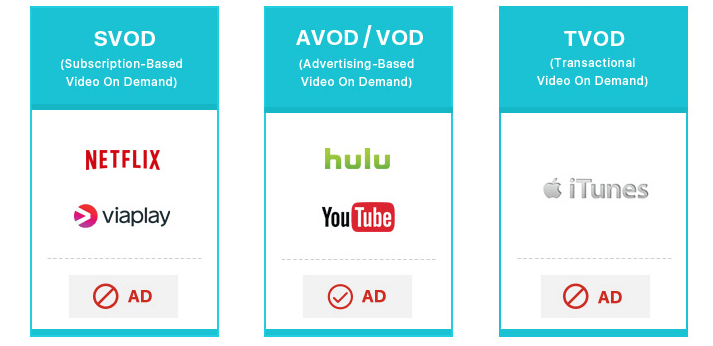
[Source: Toulousevip]
Step 4. Study the video streaming app requirements
For your video to perform well, you need to balance the following performance characteristics:
Internet Speed
Internet speed impacts the
Cloud hosting and computing architecture
For keeping video content we recommend using cloud hosting platforms since cloud hosting has the following advantages:
- Cloud hosting platforms are flexible and increase the amount of space automatically.
- Such platforms allow quick access to video content
- Cloud hosting platforms are cheaper than hard drives
An on-demand video platform requires complex architecture. As your business develops, the complexity of your architecture will only increase. Subsequently, you need to think about your platform scaling from the very beginning. In this way, you can avoid complex data migrations.
Besides, you can use cloud computing capabilities for many operations, including:
- Search engine
- Recommendation system
- A/B testing
- Streaming service
- Caching architecture
Recently, we developed a cloud dataflow for the Nanopore DNA Sequencing app. We solved the issues with the data transfer speed by using data processing and subsequent storage of incoming data. To find out more, read CASE STUDY: REAL-TIME DIAGNOSTICS FROM NANOPORE DNA SEQUENCERS
Network connectivity
Even if your online streaming platform doesn’t grow quickly, consider that it will scale up in the future. To achieve this, you need to integrate a content delivery network to your service. The content delivery network (CDN) broadcasts videos to subscribers via a server network. CDN turns your streaming app into a scalable system to handle significant traffic.
Security
You need to consider content protection from unauthorized access across customer devices. To ensure that your video streaming service is secure, consider the following:
- Network background provides 24/7 monitoring and content availability in the case of server failure.
- Token security prevents access to the videos of a 3rd-party source without your approval.
- Domain restriction locks content to a specific domain. Thanks to this feature, other users cannot see the embedded link in the source code and insert it into another platform or website.
- Geographical restriction excludes specific locations due to licensing agreements.
- Watermarking provides an extra level of live stream security. Thus, you maintain the rights to your content.
Payment gateway
To provide your subscribers with various payment options, you can use the following popular payment solutions:
- Stripe, which supports subscription services, has premade UI components and an API-first approach to customize the payment gateway for your platform.
- 2CheckOut supports payments via Visa, Discover, MasterCard, JCB, PayPal, or other credit/debit cards.
- PayPal Payments Pro, which allows you to create and host your own checkout pages for complete control.
- Braintree. This payment gateway operates in over 40 countries and accepts payments in more than 130 currencies
You might also like: DATA LOSS PREVENTION (DLP) GUIDE: POLICIES, SOFTWARE & TOOLS, BEST PRACTICES
Step 7. Develop an on-demand streaming service MVP
The last part of our guide on how to start an online video streaming business is the development stage. During this stage you must clarify functional and non-functional requirements, set timelines, think about the design, and so on.
Pay extra attention to your proposed platform design since seamless user experience is the key to
In the table below, we have gathered the essential MVP features and estimation in hours.
| Feature | Description | Estimation in hours |
| User Registration | Users can register their accounts on the platform and login to it later via email, Google, or Facebook. | From 32 hours |
| User Profile | Users can edit the | From 16 hours |
| Subscription and Payment Gateway | After the end of a free trial period, the service’s users will choose from several subscription options and pay for it via Stripe, Paypal, Braintree, etc. | From 80 hours |
| Content Search | Users can search for their preferred content on the basis of actors, movies, TV shows, ratings, genres, user reviews and more. | From 20 hours |
| Push Notifications | Users receive a notification when:
| From 24 hours |
| Reviews and Ratings | This feature provides an option to review and rate the content they have just watched. | From 44 hours |
| Design | The team creates engaging platform layouts as well as each screen of the user’s experience. | From 100 hours |
| Total |
| From 316 hours |
You might also like: WHAT IS MVP IN SOFTWARE DEVELOPMENT?
Step 8. Gather feedback
After the MVP launch, you need to gather user feedback from your platform. First, you need to find out how they like the existing features. Then, you can ask them what features they would like to add to your on-demand video service. This step will help you to understand the experience of real users with your service. You can gather user feedback in several ways:
- Email survey.
- Social media.
- Pools.
Bonus section: Important metrics to track
And now, let us look at the most critical parameters you need to measure:
Customer acquisition cost (CAC). This metric tells you the cost of acquiring a new subscriber. To calculate CAC, you need:
- Pick a specific period
- Divide the cost of marketing by the number of paying subscribers
The lower CAC, the better.
Retention Rate. This metric evaluates the percentage of active subscribers and those who have stopped using the service over a given time. You can calculate the retention rate by doing the following:
- Subtract the number of new subscribers at the end of a season
- Divide this number by the number of subscribers you started the season with
In this case, your goal is to keep the retention rate as high as possible. Still, this metric varies depending on the industry.
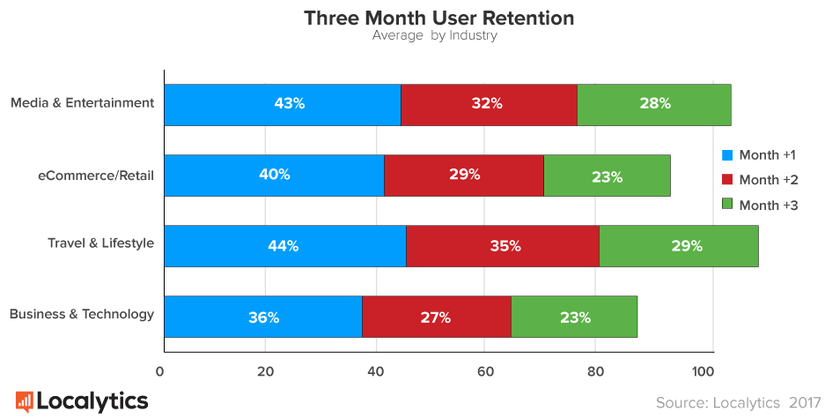
Customer Lifetime Value (CLV) shows how much revenue you receive from repeat customers. This metric also helps to evaluate the quality of your product. If you can keep your average user for a year, then the revenue such users bring during the year is your CLV.
Return on Advertising Spending (ROAS) shows the effectiveness of your marketing campaigns. You can calculate ROAS in this way:
- Divide the sales generated by your advert spending.
Emerging risks and challenges for streaming services
The video streaming industry is booming, generating buzz and drawing in millions of people worldwide, making it a great place to profit your business, generate revenue, increase awareness, and build a strong brand identity. However, it comes with certain challenges that companies face daily. Here is a quick look at the emerging risks and challenges for streaming services these days:
Raising production costs due to licensing inflation. The intense competition among leading streaming media services like Disney+ or Netflix, which are up to producing original content, leads to rising content costs.
Growing churn rate. A decline in subscription lists is normal across sectors, whether in email marketing or video streaming. According to studies, subscriber fatigue is gradually increasing. It already has a 37% churn rate, forcing companies to invest money and efforts into user acquisition and retention campaigns.
Regulatory pressure. GDPR, CCPA, and Anti-SPAM regulations have become strict, increasing startups’ costs for staying compliant with laws and ensuring service legitimacy.
Final Word
Since 1997, Netflix has become one of the media industry’s leaders. With the subscription-based model, the company continues scaling and investing in technological innovations.
When developing
